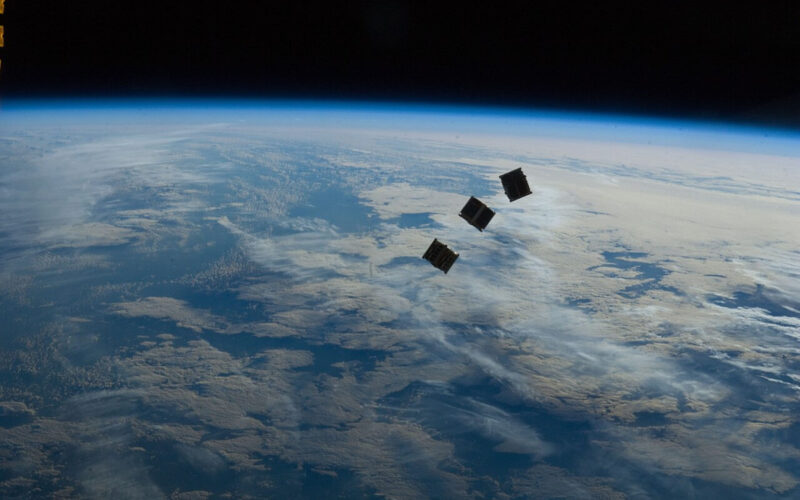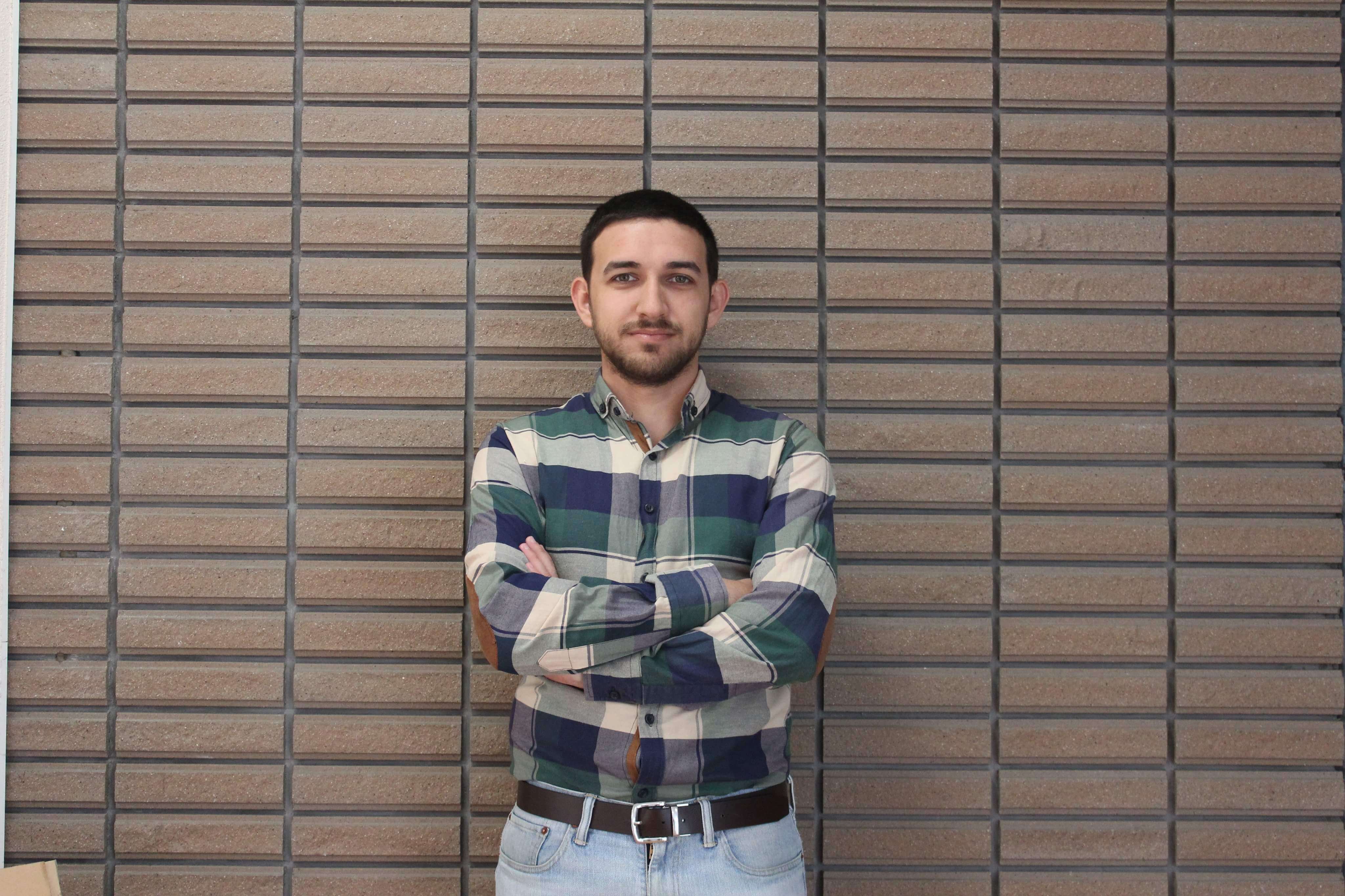The era of CubeSats is definitely in full swing. CubeSats ‒ tiny, versatile spacecraft ‒ are small satellites commonly used in low Earth orbit (LEO) for various applications, such as remote sensing and communications.
These miniature spacecraft are built to standard dimensions of the 10 cm cubic units with specified electrical power and mass capabilities. Currently, lighter, cheaper and less power-consuming than traditional satellites, CubeSats are mainly orbiting in low Earth orbit about 70 to 2,000 km (approximately 45 to 1,200 miles) above the Earth.
CubeSats are used for space education and scientific research. In the future, CubeSats, already being used in interplanetary missions, will go farther into space than any CubeSats have gone before.
Merve Kara from AeroTime has spoken with Yigit Cay, an engineer and a Ph.D. student at Kyushu Institute of Technology (Japan), working on BIRDS-4 Satellite Project, about how CubeSats are revolutionizing space exploration.
The CubeSat program began in 1999 and since then, 1,088 of them have been launched. How is the increasing popularity of CubeSats across the globe affecting space science?
Sending a satellite to space is an expensive job to do. For this reason, at the beginning of the space era, we had to rely on space agencies. We call the current era the “new space” as it has become cheaper and easier to send a spacecraft to space. Satellite development rate has also significantly increased as well as the complexity of the missions onboard.
There are orbits called low Earth orbit (LEO). LEO requires the lowest amount of energy for a satellite to be operated while orbiting the Earth. The possibility of sending your CubeSat(s) to the International Space Station (ISS) and them being released from there made launch costs really low. So technology has become possible even for universities or small companies with limited budgets.
As ISS started to provide CubeSat releases, companies and universities started to build more CubeSats. And as the technology demand increased, they have begun attempts to go to higher orbits and deeper into space with CubeSats. In this era, it is not only NASA, ESA (European Space Agency), ROSCOSMOS (Space Agency of the Russian Federation), or JAXA (Japan Aerospace Exploration Agency) anymore. As new challenges are attempted by small or inexperienced organizations (compared to space agencies), better scientific knowledge and engineering are required by these institutions.
I think that the focus on scientific research now is higher than ever before. Previously, satellites were mainly about telecommunication or remote sensing. Now, scientific research in this area is increasing all over the world.
Image: NASA
How long does it take to make a CubeSat, particularly for a country with limited satellite-building experience?
In the CubeSat level, two years is not so long anymore. It is possible to do it in less than two years. For instance, Spire is a space-to-cloud data and analytics company, which claims having built a satellite in a month. In that manner, if universities do not have qualified engineers, students can learn how to build a satellite within one and a half years. However, you need a team and this team needs to have different aspects [of knowledge]. A spacecraft is a really complex device. So every individual member of the team becomes an experienced engineer for a different aspect.
When a country enters into this project, it does not need to provide facilities and equipment to test the satellite. We can test everything in Kyushu Institute of Technology. What they are providing is money and their qualified engineers to be educated in Japan to become proper space engineers. The aim of the project is to educate students so that after they learn how to build a satellite, they can go back to their countries and teach other students how to build a satellite. So they will form a new local group and lead the group to send more satellites into space. Capacity building is the key in this project and many developing countries have benefited from this project already.
CubeSat is a low-cost tool for scientific research but companies and manufacturers also seek profit. When taking costs and time into account, what are the challenges and advantages of the small satellite industry?
One of the most popular [CubeSats usage] nowadays is for mining. Private companies are focusing on the benefit of asteroid mining (the exploitation of raw materials from asteroids). Let’s say, one asteroid has titanium-rich soil and a company wants to go and collect the titanium. In order to do that, they need to know the specific asteroid’s environmental characteristics. Therefore, scientific research becomes more necessary for them.
BIRDS Satellite Project aims to foster university space programs in non-space faring countries. What is the reasoning behind this project for Kyushu Institute of Technology?
Japan is one of the strongest contributors to the United Nations, so they want to work on the Sustainable Development Goals that are defined to solve global problems. They expect to find solutions for developing countries.
Space technologies are not only science-based technology demonstration but also political projects. When people are expecting a country’s first satellite, it creates a huge impact for that country. A country which has never developed anything space-related will now be able to create something unique and this makes people more enthusiastic about any science or engineering-oriented project that a country comes up with
Satellite is orbiting the earth. Depending on the orbit, you can cover all the world to get data from any place. With our project, we have also created a BIRDS ground station network. Developing countries [that participate in the project] promise to build up ground stations to download data from their satellite. The best part of this – they can share the data through the internet. If a country is going to conduct research in space and intends to rely on its own resources, such a country has a limited time to download and can investigate very few data. However, if a country has many different ground stations all around the world that are willing to share their data, that country can benefit from many data from the same satellite.
So I think one of the benefits of this project for the Kyushu Institute of Technology is collecting more data and creating a powerful scientific source. Another aim is, I think, building international collaborations as satellite building requires a good network of information. With a diverse team, Japanese students get the chance to explore the uniqueness of space engineering.
As the small satellite technology advances and more and more students and companies get involved in space research, how do you see the future of the industry? Are there any new ideas in this field?
Nowadays, satellite companies are focusing on asteroid mining to appropriate valuable materials at the space, space tourism to send more people in space to give them an entertaining experience and mega satellite constellations to provide better communication services.
If we talk about the newest ideas in this area, one of the new definitions of a satellite is the “lean satellite” coming from our Prof. Dr. Mengu Cho. A “lean satellite” is a satellite that has management approaches to provide the use of satellite mission to the customer in a short time and at a low cost. It utilizes risk-taking and non-traditional development of a satellite. The detailed information has been published in the journal of the International Academy of Astronautics, titled “Definition and Requirements of Small Satellites Seeking Low-Cost and Fast-Delivery” at the end of 2017. We are using this approach in BIRDS Satellite Projects to catch up with the shorter development timelines than a usual satellite project requires.
Image: courtesy of Yigit Cay
Yigit Cay is Istanbul Technical University (Turkey) and Kyushu Institute of Technology (Japan) graduate, currently continuing his Post-graduate studies on Nano-Satellite Technologies (PNST). Cay has worked at the Laboratory of Spacecraft Environment Interaction Engineering (LaSEINE). Since October 2018, he has been working on BIRDS-4 Satellite Project as the head of a subsystem sub-team that is responsible for structure subsystem and safety reviews done by JAXA before the launch.



